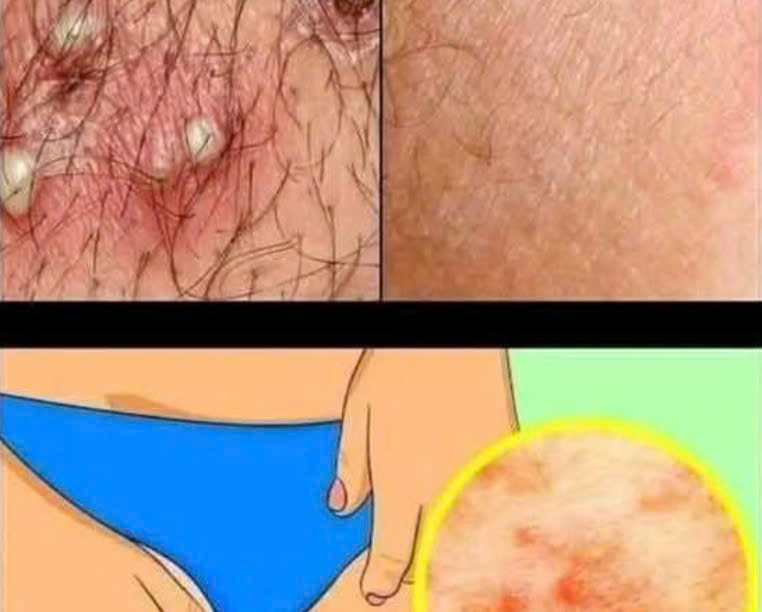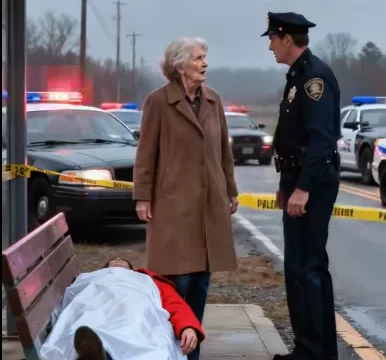At first glance, it may look like nothing more than a harmless skin irritation—a patch of redness or a few small blisters that you might brush off as an allergy or bug bite. But what if that sudden burning pain and strange rash are actually signs of something far more serious? Around the world, doctors are warning that millions of people overlook the early symptoms of shingles, mistaking it for something minor until the pain becomes unbearable or complications develop. The unsettling truth is that the virus responsible for shingles may have been lying dormant inside your body for decades, quietly waiting for the perfect time to strike.

What Is Shingles?
Shingles, medically known as herpes zoster, is a viral infection that results from the reactivation of the varicella-zoster virus—the same virus that causes chickenpox. After a person recovers from chickenpox, the virus doesn’t completely leave the body. Instead, it retreats into nerve cells, where it can remain inactive for years, even decades. Under certain conditions, such as stress, aging, or weakened immunity, this sleeping virus can awaken, travel along nerve pathways, and cause a painful rash known as shingles. The hallmark of shingles is its nerve-related pain and distinctive skin eruptions that can last for weeks or, in severe cases, even months.
Why Does It Reactivate?
The reactivation of the varicella-zoster virus can be triggered by several factors. Aging plays one of the biggest roles—after the age of 50, the immune system naturally weakens, making it easier for dormant viruses to resurface. Chronic stress also contributes, as emotional or physical strain can reduce the body’s ability to fight off infections. Other triggers include diseases that suppress immunity, such as HIV or cancer, as well as certain medications like chemotherapy or steroids. Those who have had chickenpox are automatically at risk, since shingles is not a new infection but rather a reawakening of an old one.
While shingles itself isn’t considered highly contagious, direct contact with the fluid from its blisters can spread the varicella virus to someone who has never had chickenpox or the vaccine, potentially causing chickenpox—not shingles—in that individual.
Early Warning Signs and Symptoms
One of the most dangerous aspects of shingles is how subtle it can begin. In its early stages, it often mimics the flu, leading people to ignore the initial discomfort. The first signs typically include tingling, burning, or sharp pain in a localized area—usually on one side of the body or face. The skin may feel unusually sensitive, itchy, or sore to the touch. Some people also experience fatigue, mild fever, headaches, or an overall sense of unease.
After a few days, the affected area develops a red rash that quickly turns into clusters of fluid-filled blisters. These blisters can appear anywhere but most often form on the torso, neck, or around one eye. As they dry out, the blisters crust over before healing completely. The rash itself may last two to four weeks, but for some people, the pain persists long after the visible signs disappear. This lingering nerve pain—known as postherpetic neuralgia (PHN)—is one of the most dreaded complications of shingles and can severely affect quality of life.
Is There a Cure for Shingles?
Unfortunately, there’s no permanent cure for shingles, but early treatment can make a world of difference. If you suspect shingles, seek medical attention immediately—ideally within 72 hours of the first rash appearing. Doctors typically prescribe antiviral medications such as acyclovir, valacyclovir, or famciclovir to help shorten the duration of the infection and reduce the risk of complications. The sooner these medications are started, the more effective they are.
Pain management is another key part of treatment. Over-the-counter pain relievers can help with mild discomfort, while more severe cases may require prescription medications. Topical creams, soothing lotions like calamine, and cool compresses can relieve irritation and help calm the burning sensation. It’s also important to rest and keep stress levels low, as fatigue can delay recovery.
Prevention and Protection
When it comes to shingles, prevention is the best medicine. The most effective defense is vaccination. Health experts strongly recommend the shingles vaccine—particularly for adults over 50 or anyone with a weakened immune system. This vaccine not only lowers the risk of developing shingles but also reduces the severity and duration of symptoms if the virus reactivates.
Living a healthy lifestyle also plays a vital role in prevention. Eating a balanced diet, exercising regularly, getting enough sleep, and managing stress all help strengthen the immune system. Keeping your body’s defenses strong is one of the simplest and most powerful ways to prevent the virus from reawakening.
Additionally, proper skin care is essential during an outbreak. Avoid scratching or picking at blisters, as doing so can cause infections or scarring. Always wash your hands thoroughly and keep the affected area clean and dry.
The Long-Term Impact
For some people, shingles comes and goes with minimal issues, but for others, the aftermath can be long-lasting. Complications can include persistent nerve pain, vision problems (if shingles affects the eye), and in rare cases, neurological issues. The pain of postherpetic neuralgia can be debilitating, often described as a stabbing, burning, or throbbing sensation that continues for months or even years after the rash has healed. That’s why recognizing the early warning signs and acting quickly is so important.
Conclusion: A Silent Virus That Never Truly Leaves
Shingles is far more than just a rash—it’s a vivid reminder that the chickenpox virus never truly disappears. It hides quietly within the body, waiting for the right moment to reemerge. For some, it causes temporary discomfort; for others, it leaves lasting scars—both physical and emotional.
By staying informed, recognizing symptoms early, and seeking prompt medical care, you can reduce the impact of shingles and prevent serious complications. Maintaining a strong immune system and considering vaccination, especially after age 50, are crucial steps in protecting yourself.
The next time you notice a strange burning sensation or unexplained rash, don’t dismiss it as something trivial. Shingles doesn’t just appear out of nowhere—it’s a reminder of how closely our past health can shape our present. Acting early can make all the difference between a short-lived illness and a painful, lingering struggle.
So, take care of your health, listen to your body, and if this story resonates with you, share it with your family and friends to help spread awareness. Because when it comes to shingles, understanding and prevention are the strongest forms of protection.





